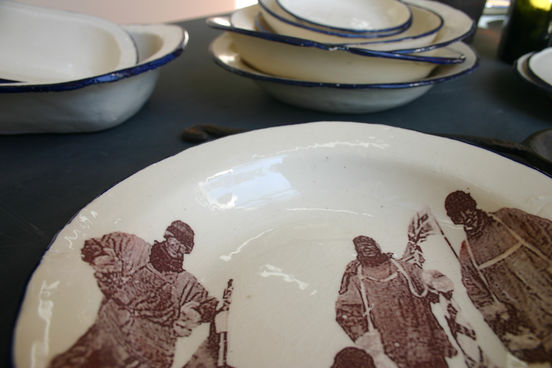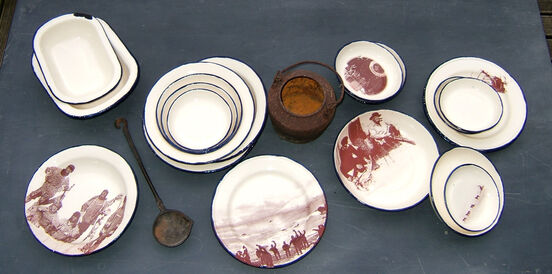There is an ever growing interest and canonization of anything and anybody connected to Antarctica. The continent looms large in the New Zealand psyche. After spending seven months conserving the heroic huts of Shackleton and Scott, I have an intimate connection with the objects and found the experience of visiting these sites very emotive.
The Nimrod hut, the provisions, equipment and rubbish that make up the site have no great intrinsic value in themselves, many of them being ordinary day-to-day items of their time. Their value lies in the association with Shackleton and the British Antarctic Expedition (1907-09), the relationship of one object to another and the degree to which they have survived.
You enter into a very poignant and personal scene. What is on display is the explorers domestic personae and among other things vital for basic social interactions, the dining room. The explorers took with them items useful and decorative to make a familiar domestic space within the harsh environment; for example, a vase, framed pictures, personal photos, and diaries accompanied the equipment required for the tough job of survival.
Although they made use of the wildlife as a source of protein, once this was unavailable meat became very important to the explorers, a situation exacerbated by the blandness of the tinned food in their provisions. Experimenting with tinned goods in cooking sometimes worked but was extremely disappointing when it did not. Eating gave the day ritual, purpose and timing and transplanting the domestic - even items that which could be considered superfluous such as a simple vase - gave a sense of normality. They hung onto customs, domestic rituals and routines in the face of adversity.
- Phillipa Durkin
--
Phillipa Durkin is a Wellington based artist.

Phillipa Durkin, Shore Party (detail), 2010.

Phillipa Durkin, Shore Party, 2010.